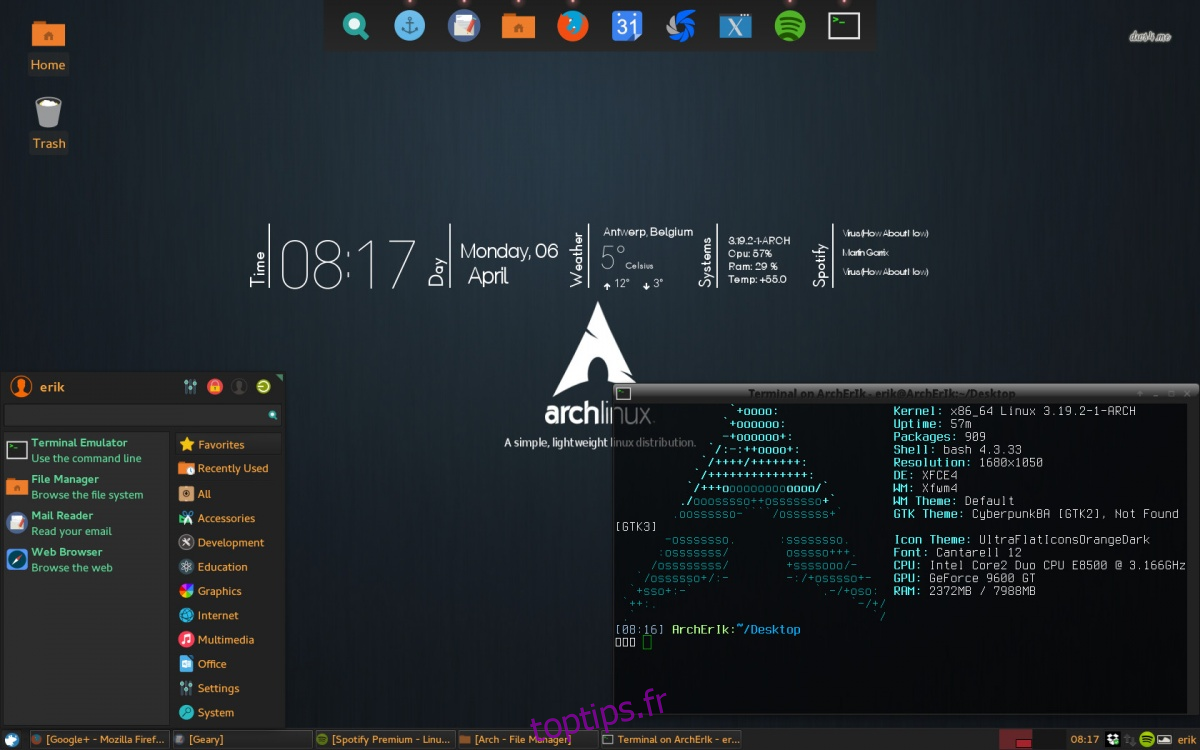

- #Arch linux qupzilla install
- #Arch linux qupzilla update
- #Arch linux qupzilla upgrade
- #Arch linux qupzilla software
The other is more like Arch Linux or Fedora and has some very new and potentially unstable packages. One OS version is very stable and has older packages like Debian (Leap). OpenSUSE has two versions of its operating system. Uninstall Qupzilla at any time by running dnf uninstall. When Fedora finishes installing the latest updates, it’s safe to use the DNF package manager to get the latest version of the Qupzilla browser.
#Arch linux qupzilla update
First, you’ll need to update your packages using dnf update. Also, the Fedora operating system is quite advanced, so it is likely that users will be able to experience the new features of Qupzilla quite quickly.
#Arch linux qupzilla software
Now that the system is up to date, use the Pacman tool to sync the absolute latest stable version of the Qupzilla browser.ĭo you need to remove Qupzilla browser from Arch? Remove it with pacman -R.įortunately, Qupzilla is a completely open source browser, so Fedora has no problem shipping it in the software sources by default. With the Pacman Package Tool, sync the latest packages and update them. Installing updates on Arch is very important and without updated programs the installation could fail.
#Arch linux qupzilla install
To install the Qupzilla browser, first make sure your Arch PC is up to date. Sudo apt-get remove qupzilla –purge ArchLinuxĪrch Linux is a cutting edge Linux distribution and because of it, users often get the latest software versions available. Sudo apt-get -t releasename-backports install qupzilla Note: Change releasename to the version of Debian you are running.

If you are running Stable or later, you will need to install Qupzilla via Debian Backports. Those using Debian Testing or Unstable can install Qupzilla with a simple apt-get install. With all software updated, Qupzilla is ready to install. The second command (apt-get upgrade) will tell Debian to install all pending updates. When apt-get update completes, it’s time to run the second phase of the update process. This will update all software sources and let the user know if there are any new updates available to install.
#Arch linux qupzilla upgrade
The first phase of upgrading Debian with apt-get is the upgrade command. The fastest way to update Debian is to use the apt-get command. If you’re running Debian stable, or something later, consider following our guide to enabling newer software sources on Debian (via Debian Backports) first.īefore installing Qupzilla, install all pending updates on your Debian PC. The Debian software sources have Qupzilla, although it varies depending on the version of Debian you use. It is also possible to install it via apt in a terminal.ĭo you need to remove Qupzilla browser from Ubuntu? Search for “Qupzilla” in the Software Center app and click “uninstall”. Run it by searching the Activities area for “Qupzilla”. To install through the Ubuntu Software Center, search for “Qupzilla”, click the “Install” button and enter your user password. Now that Ubuntu is up to date, install Qupzilla. In the update tool, you will be able to install updates directly.ĭon’t want to use the GUI update tool? Open a terminal window and run the following commands. If you want to do it outside of the terminal, press the “Windows” button on your keyboard, search for “updates” and open the update manager. There are two ways to update software in Ubuntu.

To install the program, you must first install any available software updates. Ubuntu users can install the new Qupzilla browser directly from the software sources. To use this browser, you must be running Ubuntu, Debian, Arch Linux, Fedora, OpenSUSE, or at least be able to run an AppImage. In this article, we will go over the different ways to install Qupzilla on Linux. SPOILER ALERT: Scroll down and watch the tutorial video at the end of this article. It also has awesome features like a built-in ad blocker, Opera-like speed dial for quick access to websites, a built-in RSS reader, and more! For starters, it uses a “native widget style” to integrate with almost all Linux desktop environments (even non-KDE ones). It’s the official browser of the KDE project and there’s a lot to love about it. Tired of big browsers and looking for an open source alternative that respects your privacy? Check out the Qupzilla browser.


 0 kommentar(er)
0 kommentar(er)
